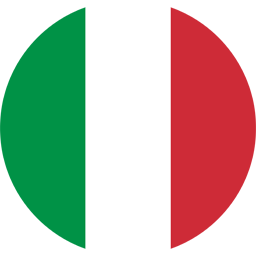The Apulian trullo represents one of the most extraordinary examples of rural architecture in our country: it is birth in antiquity, in fact, is linked to the massive presence of limestone formations in the area, which has contributed to the spread of this unique dwelling in the world.
The centuries have passed and many of the Trulli that we find in the magnificent Itria Valley need to be restored: very delicate interventions that require a deep knowledge of Trulli. This is why we asked Francesco, who together with his father has been running the Edilserra company for over 40 years, to reveal some of the secrets of his work.
"In ancient times, the domes of the Trulli and the structures themselves were built with stones found on site: so they vary from area to area, but they are mainly semi-hard limestone. Today, when we are commissioned to build a trullo from scratch, we turn to local quarries, but we keep the technique unchanged: so for the cone of a trullo, we use only handmade chianche, which are inclined and overlapped in order to facilitate the flow of water. At the base of the covers, the stones are connected to function as fronds. Sometimes the last stones are shaped "channel-like" to collect rainwater in the cistern."
What is the technique that should be used in the renovation of a trullo?
Definitely, the "scuci e cuci" technique, which consists of scucire - that is, disassembling small pieces of cone - and ricucirli, that is, reassembling them piece by piece by integrating or working the chianche where necessary. It is a question of recovering the various pieces and then reconstructing the damaged area with the materials removed; the waste material of the workings acts as a filling between the chianche so as to ensure thermal insulation. In some cases we also have to remove part of the filling - always in stone - and then reinsert it, in order to create the "air chamber" between the internal candle stones and the external chianche. This allows the structure to be rebuilt without altering its shape and dimensions.
How to restore the roof?
Surely the first thing to do is the disassembly of the chiancarelle to verify the conditions of the cone. Immediately after we proceed to reassembly, with any processing of the chiancarelle (always by hand). For the assembly we start from the base of the cone, placing the stones in concentric horizontal rings, without the help of wooden forms. Each stone is set so as to fit between the two lateral ones, tilting them slightly - as I said above - to facilitate the flow of water. Finally, the base of the pinnacle (tip of the trullo) is plastered where the original structure requires it, and the pinnacle is fixed. The shapes are different, all of very ancient origin: the most common are round or composed of several elements, such as a disk and a sphere or a star. The important thing is never to "strip" the cone completely.
So, despite the fact that we live in the third millennium, do you still recommend a traditional method of working to your clients?
Since we are dealing with houses that have existed for centuries, the only road we follow is that of traditional workmanship. The manual workmanship of the chianche, for example, leads to imperfect work, but this is precisely the merit. All the structures will present the hammer blow of who worked the stones, making the trullo unique and for, this, precious. The manual working methods are complex, hard, and difficult to practice, but they are also the only ones that enhance the spectacularity of dry stone, making the trullo eternal.

